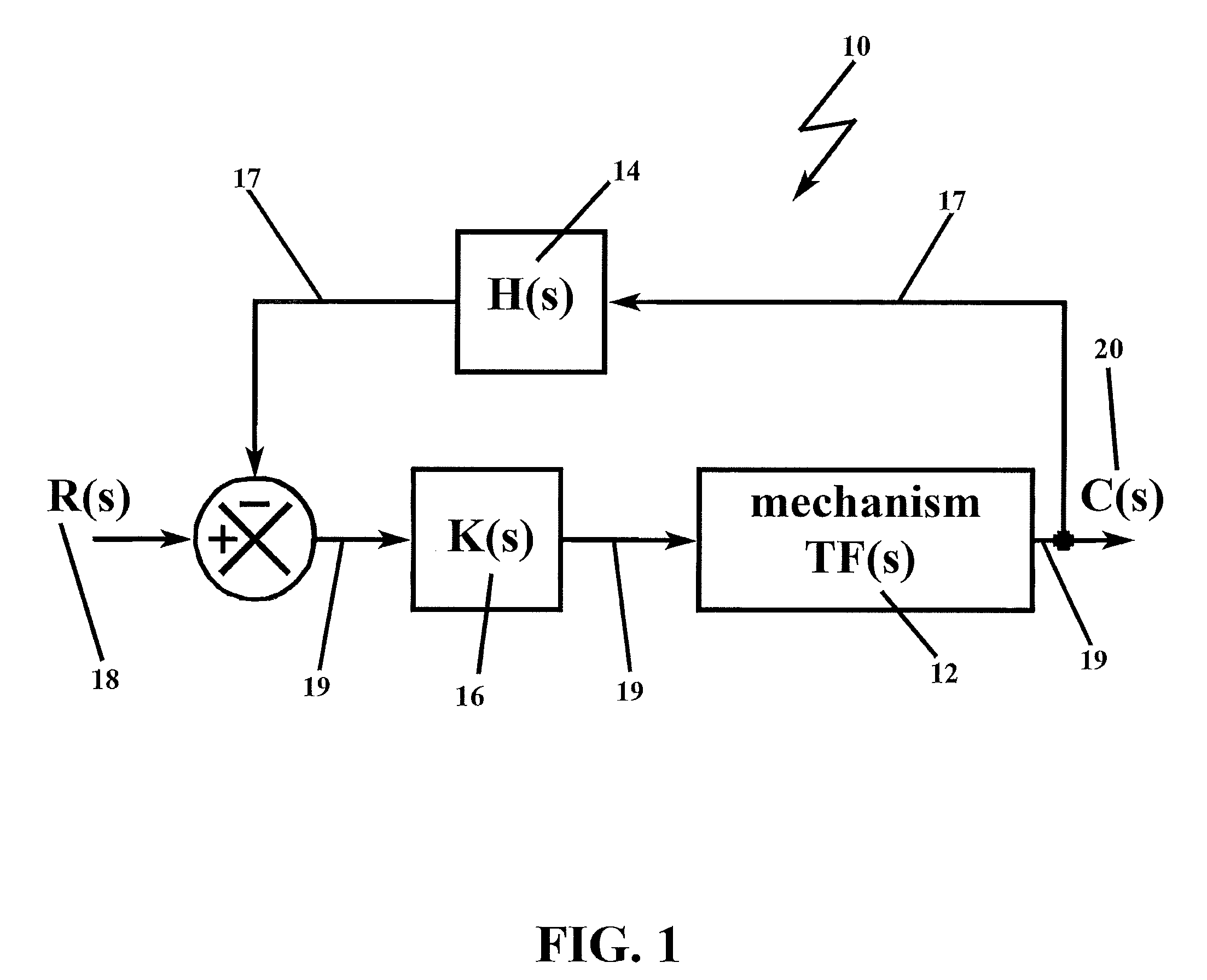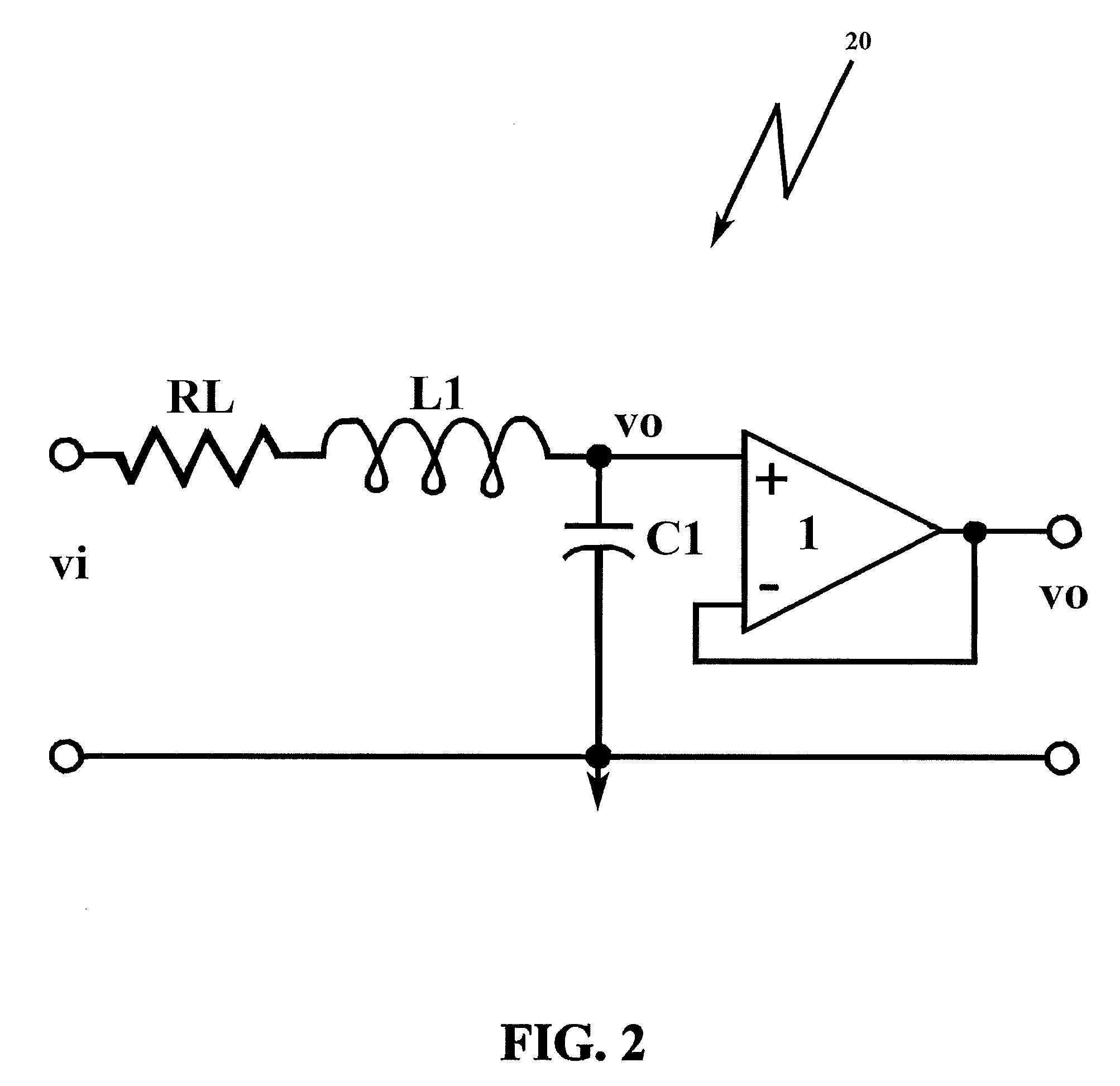Compensation for canonical second order systems for eliminating peaking at the natural frequency and increasing bandwidth
a second-order system and peaking technology, applied in the field of limiting resonance, can solve the problem that no prior art design teaches an algorithmic approach to resonance compensation, and achieve the effect of increasing bandwidth and reducing peaking
- Summary
- Abstract
- Description
- Claims
- Application Information
AI Technical Summary
Benefits of technology
Problems solved by technology
Method used
Image
Examples
Embodiment Construction
)
[0086]In describing the preferred embodiment of the present invention, reference will be made herein to FIGS. 1-22 of the drawings in which like numerals refer to like features of the invention.
[0087]The methodology of the present invention solves the problem of unwanted resonance in resonance-prone systems. The prior art has gone to great lengths to remove the resonance altogether, employing notch filters at frequencies identical to the resonance frequency to remove selectively the resonance frequency entirely from the circuit function, and / or low-pass filter systems that allow frequencies up to the resonance frequency to pass, but cutoff frequencies that are higher than the low-pass filter bandwidth, and high-pass filter systems that allow frequencies below the high-pass filter bandwidth to be cutoff.
[0088]Counter-intuitive to the operative solutions of the prior art, the present invention adds an analytically derived, predetermined gain to the loop that effectively functions to ...
PUM
 Login to View More
Login to View More Abstract
Description
Claims
Application Information
 Login to View More
Login to View More - R&D
- Intellectual Property
- Life Sciences
- Materials
- Tech Scout
- Unparalleled Data Quality
- Higher Quality Content
- 60% Fewer Hallucinations
Browse by: Latest US Patents, China's latest patents, Technical Efficacy Thesaurus, Application Domain, Technology Topic, Popular Technical Reports.
© 2025 PatSnap. All rights reserved.Legal|Privacy policy|Modern Slavery Act Transparency Statement|Sitemap|About US| Contact US: help@patsnap.com



